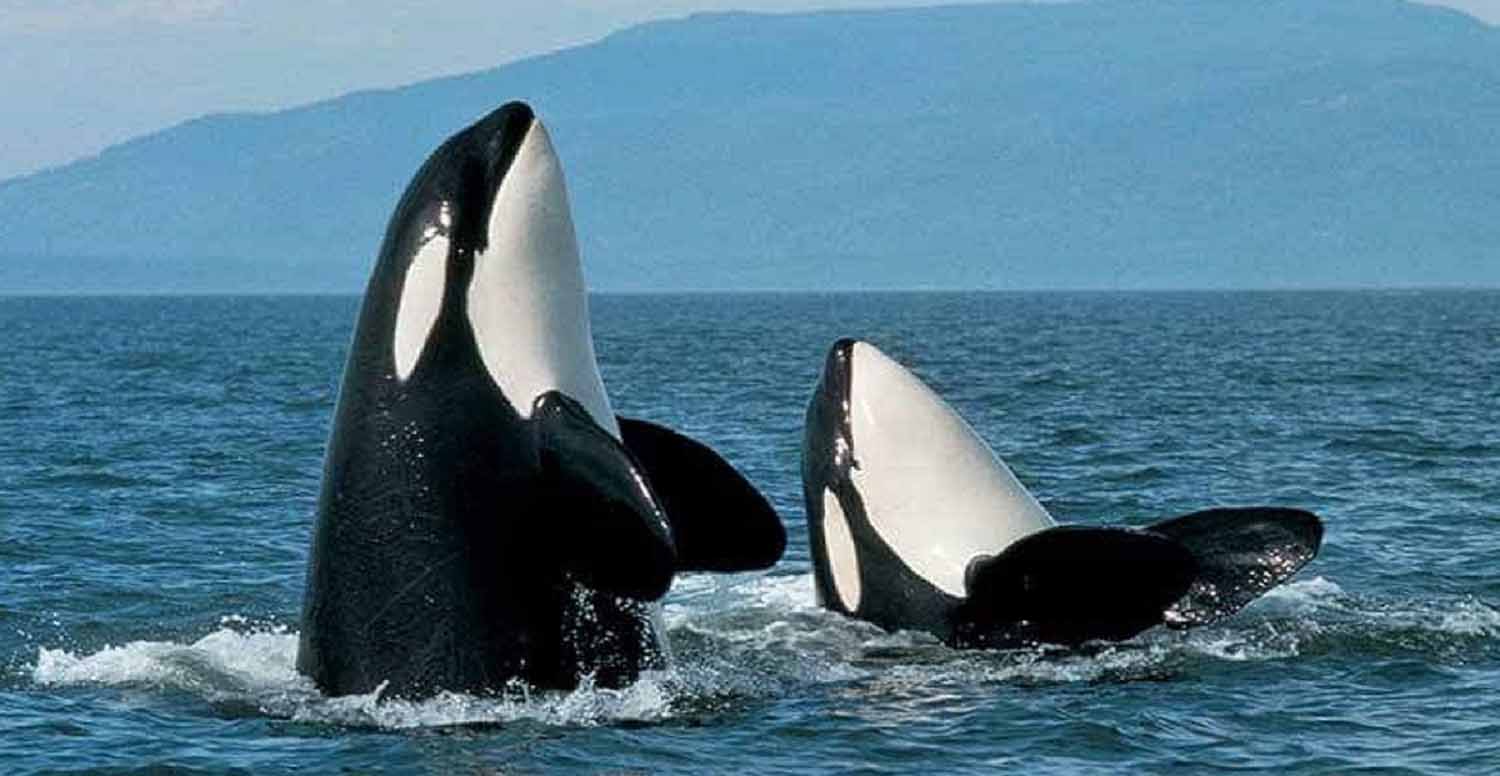
Whale Watching in Seattle: Rethinking How We Connect With Marine Life
There’s a reason whale watching in Seattle is on so many bucket lists. The waters of Puget Sound and the greater Salish Sea are alive with orcas, gray whales, humpbacks, and minke whales. On any given day, a glance across the water might reveal the spray of a surfacing whale or the sleek curve of a dorsal fin. For decades, locals and visitors have chased that magic, and the city has built an entire industry around it.
But beneath the excitement and wonder, there’s another story — one that doesn’t get told as often. The boom of whale-watching tourism hasn’t come without a cost to the very wildlife that makes it so special. And as conversations about conservation grow louder, many are rethinking how they experience marine life in Seattle’s waters.
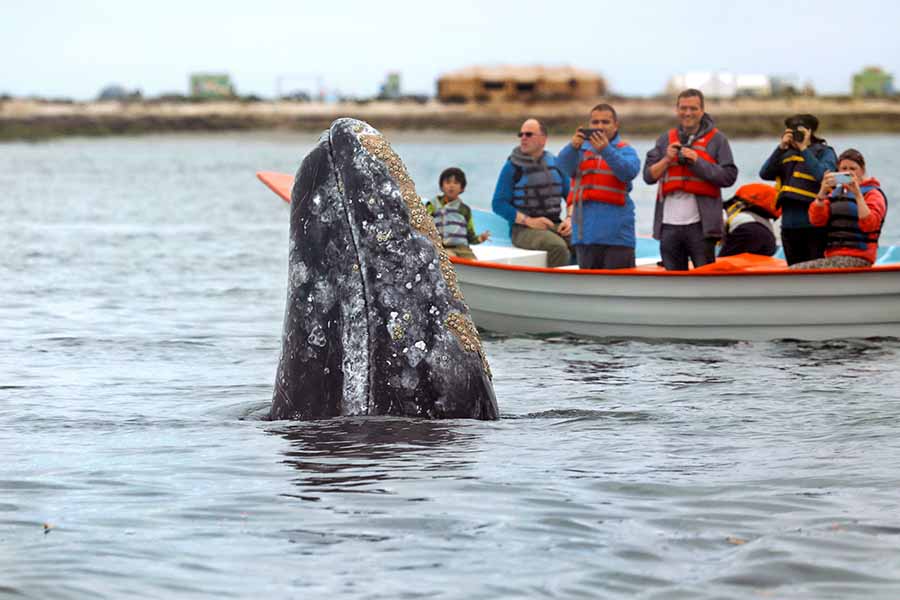
The Rise of Whale Watching in Seattle
It started small. In the 1970s and early 1980s, spotting orcas in the Sound was mostly a lucky break — a fisherman with a camera or a commuter catching a glimpse from the deck of a Washington State Ferry. By the late 1980s, a few adventurous operators began offering informal tours, pitching the chance to see these incredible animals up close.
Everything changed in the 1990s. The “Save the Whales” movement had ignited global awareness, and orcas — especially the iconic Southern Resident pods — became a symbol of the Pacific Northwest. Tour operators expanded rapidly, and by the 2000s, whale watching in Seattle was no longer niche. It had become a major part of the region’s identity, drawing hundreds of thousands of people to the water every year.
The numbers tell the story. According to the Port of Seattle, tourism connected to the waterfront accounts for hundreds of millions in annual revenue, and whale-watching tours are a key driver. Studies from NOAA Fisheries estimate that the whale-watching industry across Washington and British Columbia collectively generates tens of millions in direct spending annually.
And it’s easy to understand why. There’s something profound about seeing an orca breach against the backdrop of the Olympic Mountains or spotting a gray whale surfacing near the islands. For many, those moments feel spiritual — a connection to nature that lingers long after the boat ride is over.
But the rapid growth of this beloved industry also brought new challenges, ones that weren’t fully understood until scientists began looking closely at the impact of our presence on the Sound.
The Hidden Cost to Marine Life
The very things that make whale watching so magical — getting close, being on the water, following pods — are also the things that can quietly harm marine ecosystems.
Noise is one of the biggest problems. Orcas, particularly the Southern Resident pods, rely on echolocation to navigate, hunt, and communicate. The hum of multiple boat engines crowding the same stretch of water makes that incredibly difficult. Research shared by The Whale Museum and Orca Network has shown that noise pollution disrupts hunting behavior and stresses the animals, sometimes pushing them away from critical feeding areas.
Then there’s vessel traffic itself. Even with regulations in place, the sheer number of boats during peak season increases the risk of strikes and dangerous close encounters. The cumulative pressure of human activity changes the way these animals behave — altering patterns that have existed for generations.
And while some operators have embraced quieter engines, strict distance rules, and coordinated efforts to minimize disruption, the reality is that the industry still places a heavy footprint on an already fragile ecosystem. The Southern Resident population, in particular, continues to struggle. From prey scarcity to habitat loss to vessel disturbance, they are now among the most endangered marine mammals in the United States.
It’s a complicated problem. Whale-watching tours help foster a love for the ocean and fund conservation programs, but the activity itself also contributes to the very challenges those programs are trying to solve. That tension has left many locals and visitors asking the same question: how can we experience the wonder of these waters without adding to the problem?
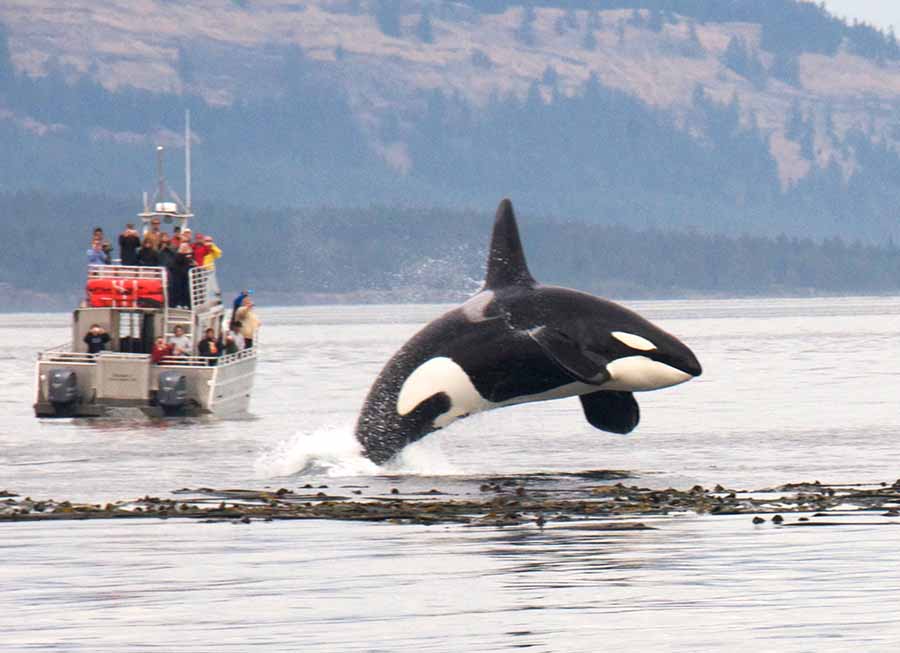
Looking for an unforgettable day on the water? Seattle’s Tall Ship’s “Bay Lady” offers a unique opportunity to experience the magic of tall ship sailing in the heart of Seattle. Step aboard this magnificent vessel and sail into history as you take in the beauty of Elliott Bay and the Seattle skyline. Don’t miss your chance to embark on a one-of-a-kind adventure—book your sail today!
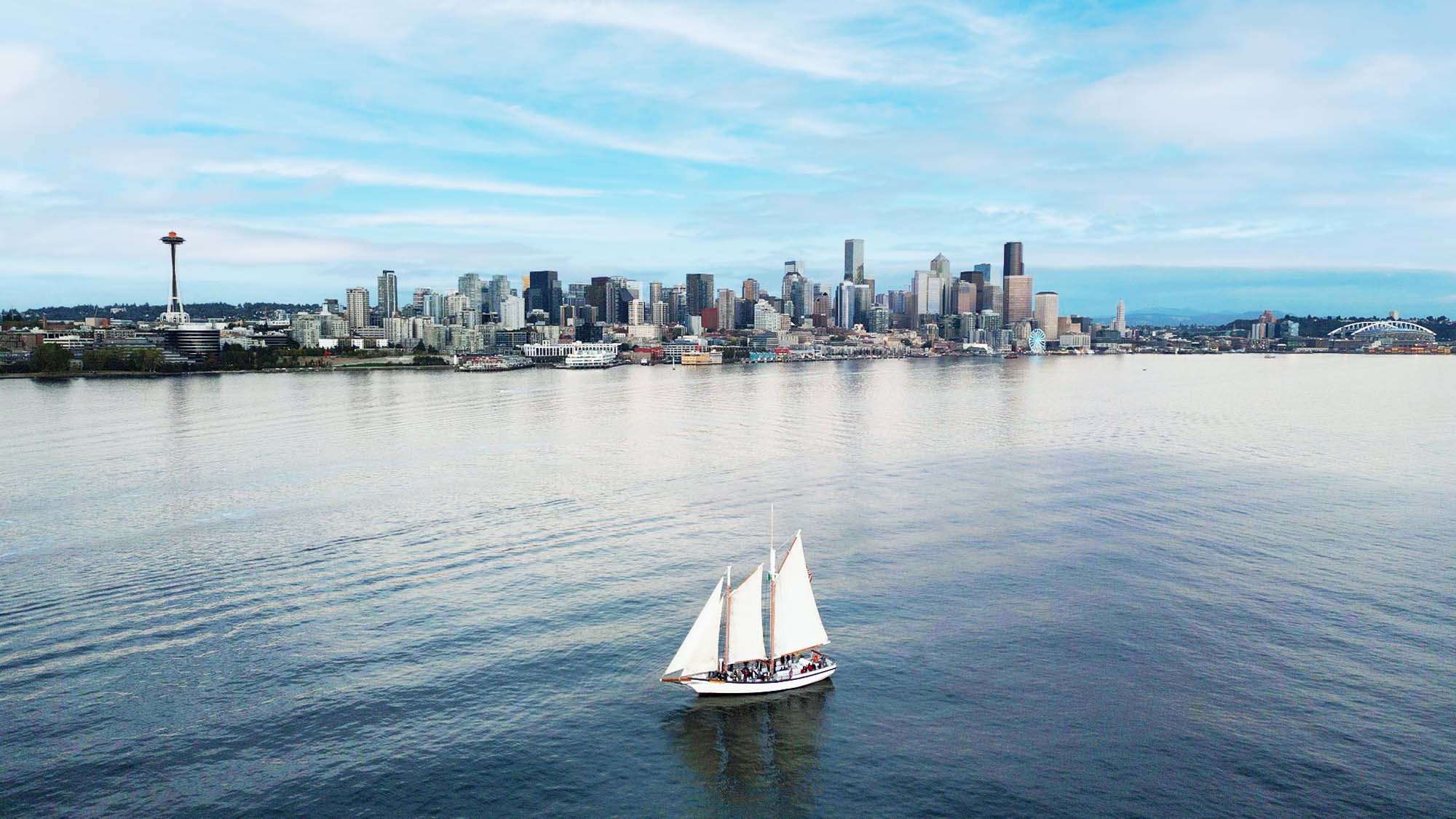
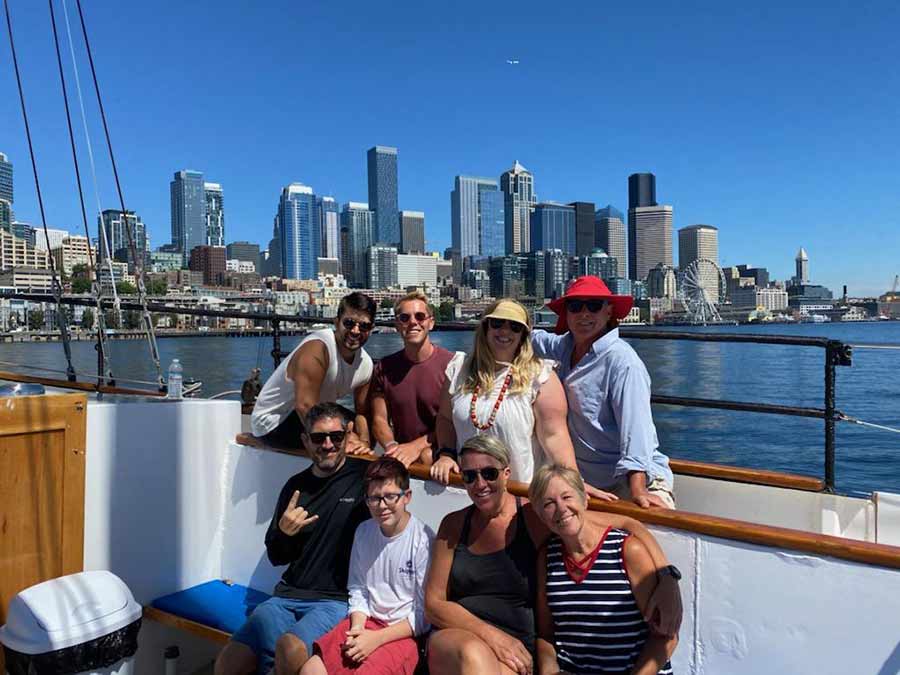

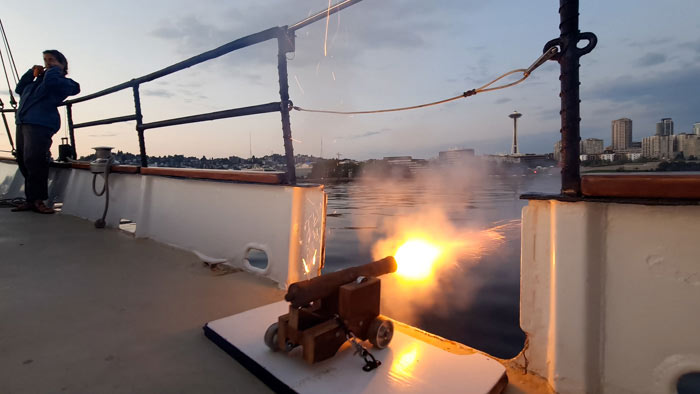
Guests enjoy the sights and sounds of a tall ship tour onboard Seattle’s Tall Ships, “The Bay Lady”.
Seeing the Sound Differently
There’s another way to experience the Sound that doesn’t involve chasing pods or filling the air with engine noise. From the deck of a tall ship, like the Bay Lady – Seattle’s tall Ship’s twin masted schooner, the water feels different. Quieter. More natural.
A sailing trip isn’t a whale chase. The route follows the breeze, not the animals, and that slower, more mindful pace makes a difference. The absence of engines means less noise underwater, allowing marine life to carry on undisturbed while you simply observe. On a good day, you might spot harbor seals lounging on a buoy, a pod of porpoises gliding past, or seabirds swooping low across the water. And every so often, a distant spout or dorsal fin breaks the surface, a reminder that these waters are alive.
Even without a whale sighting, there’s something deeply restorative about this kind of experience. The city skyline fades into the distance, Mount Rainier looms on the horizon, and the sails overhead catch the wind. It’s a way to be present in the Sound — not as a spectator chasing an encounter, but as part of the environment itself.
For travelers and locals alike, this quieter connection often leaves the strongest impression: the sense that you’ve seen Seattle from a perspective few people take the time to find.

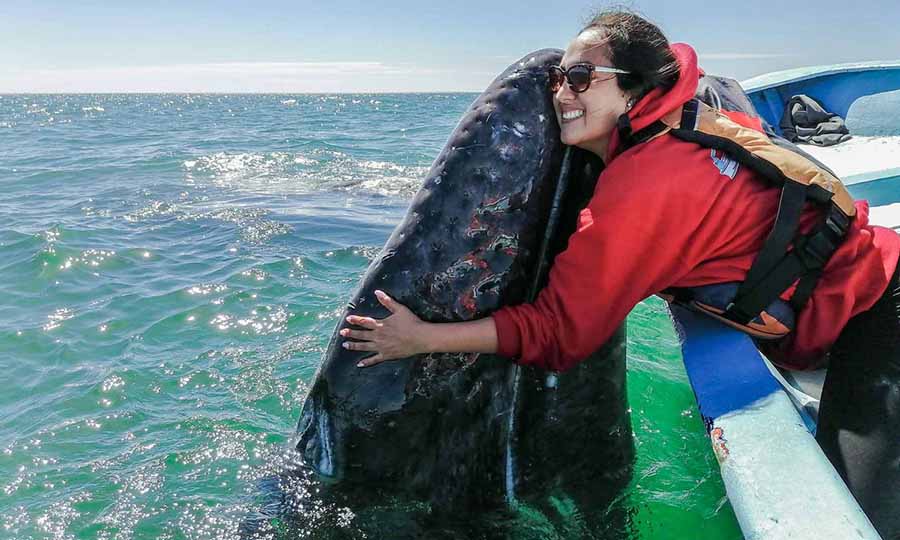
Supporting Conservation Efforts
Choosing a quieter, more eco-friendly experience is one way to help, but there are other steps you can take to protect the Sound and its wildlife.
- Respect distance regulations. Whether you’re on a boat, a kayak, or even onshore, maintaining safe distances minimizes stress for the animals.
- Support local organizations. Groups like Orca Conservancy and the Pacific Whale Watch Association work to protect marine habitats and educate the public. Even small donations or volunteer time make a difference.
- Be mindful of what you leave behind. Litter and pollutants find their way into the water quickly. Keeping the waterfront clean helps maintain the health of the entire ecosystem.
- Share what you learn. Talk with friends and family about sustainable ways to experience the Sound. Awareness leads to better choices — and better outcomes for marine life.
These aren’t massive lifestyle changes. They’re simple shifts that, collectively, help ease the pressure on the Sound and keep the magic of this region alive for generations to come.
At its heart, whale watching in Seattle is about connection — the thrill of seeing a fin break the surface, the wonder of sharing the water with some of the most majestic animals on Earth. That connection doesn’t have to come at the expense of the Sound itself.
By choosing quieter, more mindful ways to experience these waters — like a sail aboard the Bay Lady — you can still feel the magic of the Sound while helping to protect it. Seattle’s waters have stories to tell. All you have to do is slow down and listen.
Book a sail with Seattle’s Tall Ship
If you have never experienced the thrill of sailing on our tall ship, there is no better time to try than now. With multiple sailing times and experiences available, our family-friendly harbor experiences are a must-do Seattle activity. Join us today!
